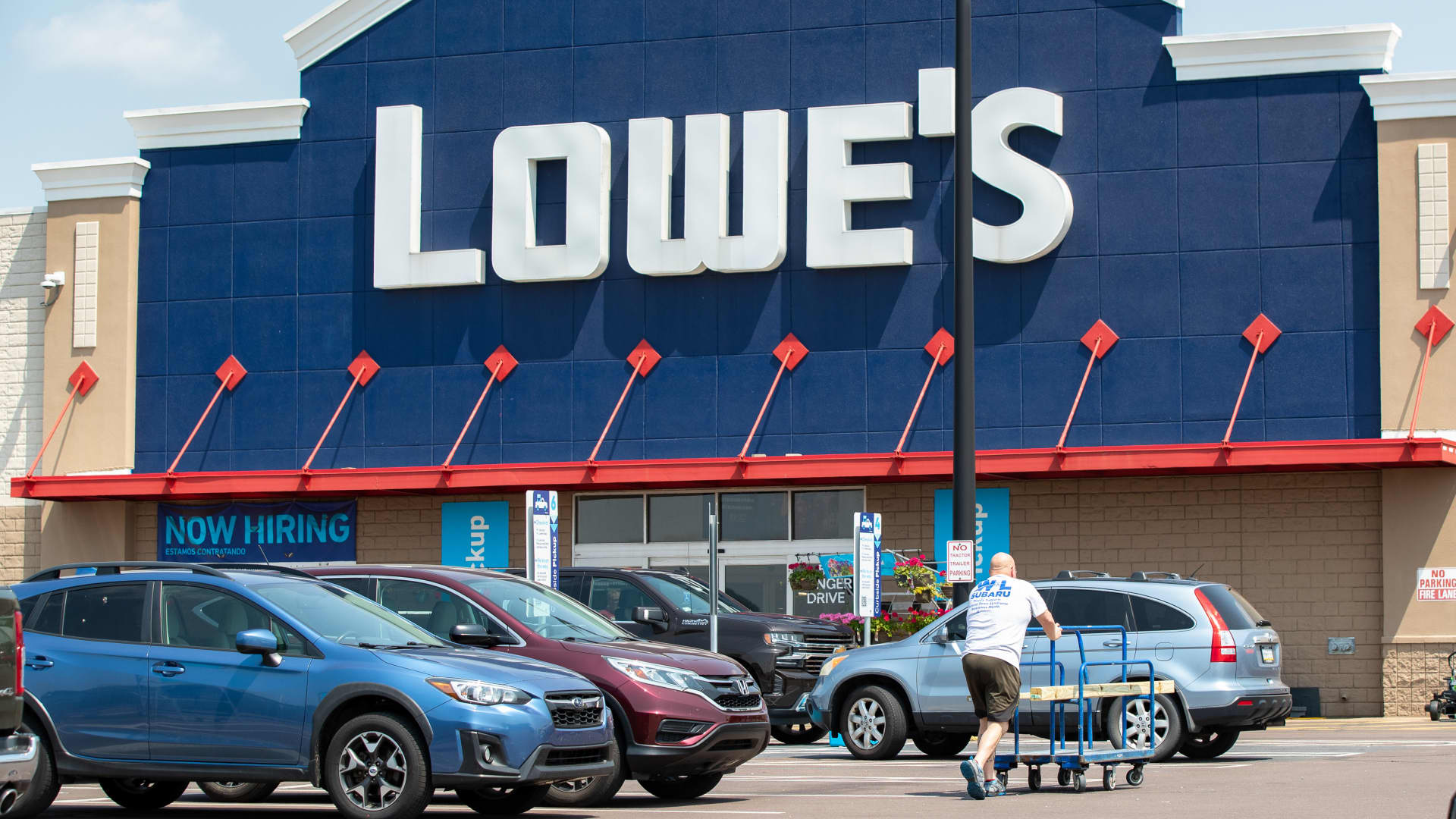Best Buy on Thursday missed Wall Street’s quarterly sales expectations but stressed higher profits and lower costs as softer demand for consumer electronics continues.
Shares of the retailer gained 13% Thursday.
The retailer beat on earnings per share and stuck by its full-year forecast. It expects revenue to range from $41.3 billion to $42.6 billion for the full year, which would mark a drop from the most recently ended fiscal year when full-year revenue totaled $43.45 billion. The company said comparable sales will range from flat to a 3% decline.
On an earnings call, CEO Corie Barry said Best Buy expects 2024 “to be a year of increasing industry stabilization,” echoing remarks the company first made in February. She said the retailer expects sales trends to “sequentially improve” in the next three quarters.
But, she added, the retailer still faces many challenges, including persistent inflation, high mortgage rates and a hangover from outsized tech spending during the pandemic.
Here’s how Best Buy did in its fiscal first quarter compared with what Wall Street was anticipating, based on a survey of analysts by LSEG:
- Earnings per share: $1.20 adjusted vs. $1.08 expected
- Revenue: $8.85 billion vs. $8.96 billion expected
The company’s net income for the three-month period that ended May 4 rose slightly to $246 million, or $1.13 per share, from $244 million, or $1.11 per share, a year earlier. Adjusting for one-time items, including restructuring charges, Best Buy reported earnings of $1.20 per share.
Net sales dropped to $8.85 billion from $9.47 billion in the year-ago period.
Best Buy’s sales have been sluggish, as the company deals with the aftermath of roughly two years of unusually high sales during the Covid pandemic. The retailer has been in the middle of a waiting game for the replacement cycle of laptops, kitchen appliances and more to normalize and for the debut of new tech gadgets to push customers to its stores and website.
Barry said on the earnings call that new devices will help lift excitement and sales. For example, she pointed to new Apple iPads and Microsoft laptops with the company’s Copilot artificial intelligence tool built in. Plus, she said, the company plans to have a series of sales events from July through mid-September focused on students and parents who are shopping for laptops and other items for back-to-school.
Like other retailers, Best Buy has noticed a pullback in purchases of discretionary items as consumers manage higher costs because of inflation.
Barry said customers continue to seek value and hold back when it comes to pricier purchases. She said the quarter was more promotional than expected in both the number of deals and size of discounts, with especially high promotions in certain categories, such as major appliances.
The company said it saw growth in its services and laptop categories.
Comparable sales, a metric that includes sales online and at stores open for at least 14 months, declined 6.1% compared with the year-ago period. Chief Financial Officer Matt Bilunas said on the company’s earnings call that comparable sales declined 4.5% in February and dropped by 7% in both March and April.
In the U.S., comparable sales dropped 6.3%, and online sales tumbled 6.1% year over year. Even so, online sales accounted for nearly one-third of total U.S. revenue in the quarter.
The company is looking to newer businesses, including its subscription-based membership program. It relaunched My Best Buy as a three-tier program in late June. The lowest tier of the program is free, but the top tier costs $179.99 per year for perks, including round-the-clock tech support, up to two years of product protection and 20% off repairs, among other benefits.
The Minneapolis-based retailer has also slashed spending. Earlier this year, Barry said the company would lay off workers and cut costs across the business. She did not specify the number of layoffs but said Best Buy would invest in areas that could drive growth, like artificial intelligence.
Best Buy said it spent $15 million on restructuring costs during the quarter, primarily related to severance or similar pay for employees who lost their jobs. It said it does not expect to have any other significant charges related to those layoffs, which began in the company’s fiscal fourth quarter.
As of early February, Best Buy had more than 85,000 employees. That’s down from nearly 125,000 workers in early 2020 and more than 90,000 employees in early 2023, according to company financial filings.
The company also said in late February that it would close 10 to 15 stores in the fiscal year, after shuttering 24 in the previous one.
Meanwhile, Barry said the company is updating the look of stores across the chain. She said the “refreshes” aren’t as costly as full store remodels, which allows the company to improve all locations rather than a limited number.
It is also leaning on vendors as it trims back its workforce. For example, she said, Samsung is providing more experts in appliance departments across hundreds of Best Buy stores.
Best Buy on Thursday adjusted its full-year capital expenditures forecast to an estimate of $750 million, down from as much as $800 million.




